Over the years I’ve seen my share of horribly built above ground swimming pools. Many of them were severely misshaped, all their uprights leaned to the side and the resin connectors were cracked and did not hide the screws. The biggest way to mess up an above ground pool installation, though, is for it not to be level.
The most “off level” an above ground can get is around three to four inches off. This means when the pool is filled, on the one side the pool structure is three or four inches higher above the waterline than on the other side. Chief Obvious nature fact: Water is always level with the earth. Since water can only be level, an “off level” swimming pool will look really bad when you fill it.
I don’t usually see above ground pools that are off more than four inches, because they will almost always cave in when the level is off by more than that. Most above ground installation manuals will say that a pool should be level within an inch, but I try to get it level to an eighth of an inch or so. Above grounds with liners that have patterns or tile lines will start to look “off level” at about the half inch mark as the naked eye can compare the level pool waterline against the pattern of the liner.
How an Above Ground Pool Is Leveled
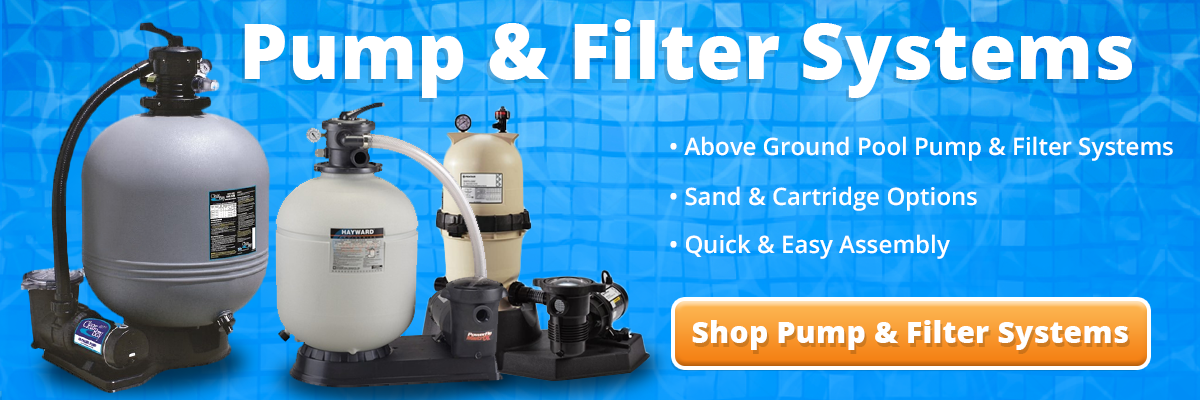
Traditional above ground swimming pools are leveled at their bottom track. This is the track that the pool’s wall fits into. So, if the track is level, then so is the wall. Most do-it-yourselfers will go on YouTube and find that most videos show how to level the entire bottom area of the pool. They will show this using some makeshift long leveling tool made from two-by-four wood nailed together according to the length needed to span the radius of the pool’s size. They then tape a two or four-foot level to the wood so they know when it’s level and attach one end to a piece of wood that’s hammered into the earth at the very middle of where the pool is going. At that point the long two-by-four wood can swivel in 360 degrees from the center pivot point and can be used to level the earth.
This leveling method does work to level the earth, but it is time-consuming and ultimately not very accurate in leveling what’s really important to level which is the bottom track. The bottom of an above ground pool doesn’t have to be level. Some will “dish out” the bottom of their pool so it is gradually deeper in the very center and that’s cool as it may make it easier to maintain the pool later on.
The reality is that it is much more important for the pool’s bottom to be smooth instead of level. The above-mentioned long two-by-four leveling method does very little at making the pool bottom smooth as the smoothing is done later on after the wall is up and the bottom coving is built or installed.
Leveling the Pool’s Bottom Track
When I started building above grounds in the eighties, we didn’t use blocks for leveling. We would just level the earth and lay the track down and roll out the wall. The result was some of those pools were pretty “off level”. Today every pool installer uses some kind of blocks for leveling the track and we place a block under every one of the bottom track connectors. I’ve seen people use all kinds of things for leveling blocks from cutting pieces of small pressure treated wood (not recommended) all the way to full 8”x8”x16”concrete blocks buried (also not recommended). Most do-it-yourselfers use too big of a block for this as they think the blocks have some structural value and they don’t. I use 6”x6” standard thickness square pavers.
CAUTION: SIDE RANT AHEAD
When I explain that the blocks under the track have no structural value, some homeowners look at me sideways and don’t believe or agree with me on this. If you work 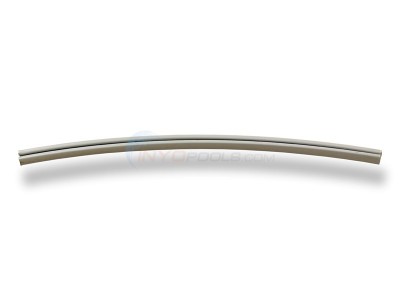 in computer science or are an engineer of some kind, chances are you won’t agree with me as these two professions must attract the overly intellectually arrogant. In this case, it doesn’t matter if you are wrong, as it won’t hurt anything to overbuild. You can spend your whole week digging and leveling giant unnecessary pieces of concrete materials. I’m sure your body needs the exertion and your soul will enjoy being outside for a change. Certainly there is value in everything we do.
in computer science or are an engineer of some kind, chances are you won’t agree with me as these two professions must attract the overly intellectually arrogant. In this case, it doesn’t matter if you are wrong, as it won’t hurt anything to overbuild. You can spend your whole week digging and leveling giant unnecessary pieces of concrete materials. I’m sure your body needs the exertion and your soul will enjoy being outside for a change. Certainly there is value in everything we do.
Anyway, when leveling the blocks under the track, people do it in two ways. Most will lay down the pool’s bottom track, shape it and somehow mark where the connectors are and then take the track out of the way so they can level the blocks. Some will keep the track in place and level the blocks underneath. This is tricky as the track will get in the way of leveling the blocks. The latter is the method I use.
What to Use to Level the Blocks
Most people will use a four-foot level and starting with the first block, will level from block to block all the way around until all blocks are the same level. This is hard to do as the distance between the track connectors (which is where the blocks go) is more than four feet long. To make up the difference, some will tape their level to a five foot 2×4 so it will reach from block to block.
Personally, if I were using a four-foot level to level the blocks, I would leave the track in place and put the level on top of the track. This will allow you to level farther than the four-foot length of the level as the track covers the longer distance from connector to connector. This is also more accurate as you are now leveling the actual track and not just the blocks. Confused yet? Sorry. This will make more sense when you are doing it instead of just reading about it.
The Ultimate Leveling Tool
Years ago I used a four-foot level to level pool tracks, but eventually graduated to using a builder’s level instead. Hand levels work well, but the drawback is you are leveling from block to block which means you are using a different point of reference every time. This can result in the blocks not being all the same level. You’ll know how level or off you are when you finally level that last block with the original first block you started with. Often the blocks will be off and will have to be redone using this method.
A builder’s level or transit uses the same point of level reference every time. This means the blocks will all be the same level the first time. It does take two people to do this, though, as one has to look through the level while another is leveling. You could rent a 360-degree laser level and do it on your own if you don’t have any good friends.
In conclusion, just remember that it’s the bottom track that has to be level and not the ground inside the pool. Get that bottom track level and the right shape and the whole pool will look good and last longer no matter how bad the pool’s bottom looks or feels.

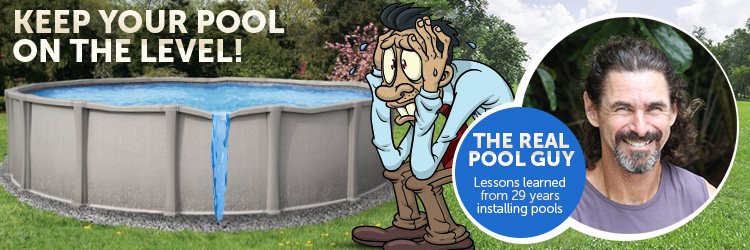
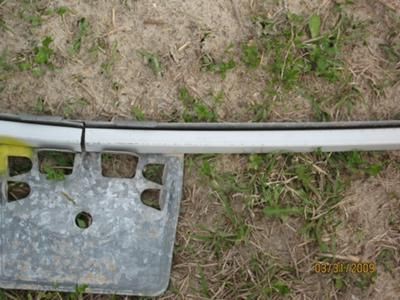
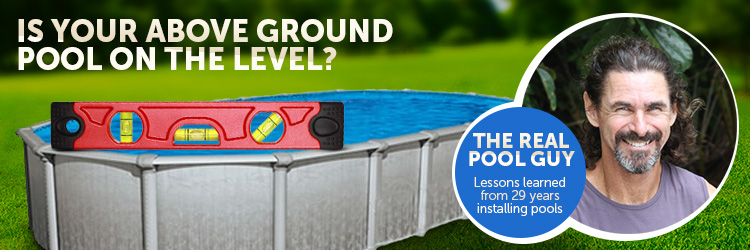
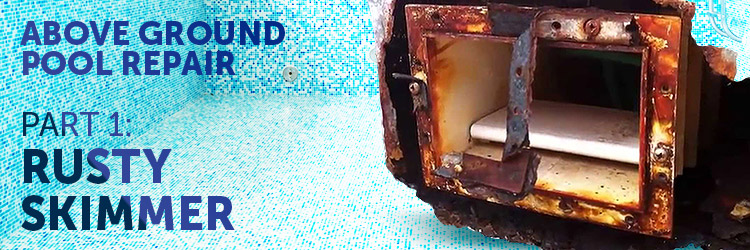
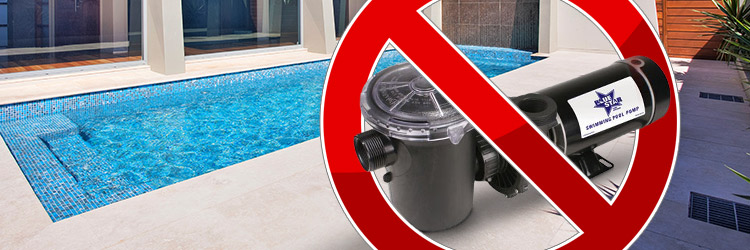
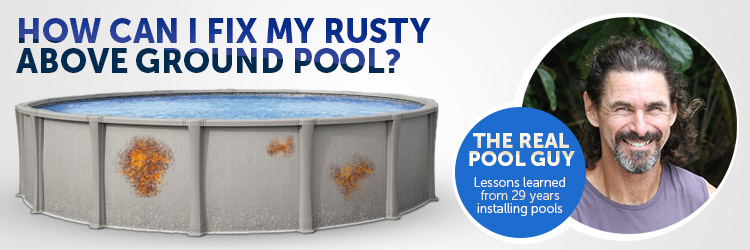






We purchased a used 33 by 54 round pool. My husband and son became carried away with the Bobcat and removed to much ground. Now I’m unsure what we should do. We live in the Midwest, with all the rain we’ve had I can tell there will be an issue with erosion. I have researched putting the pool on a concrete pad but, this will be costly. Can we pour a circular concrete footing to place the wall on and then fill in the center with lime and sand? Or should we continue with regular installation and install proper drainage? Either way proper drainage will occur. Thank you!
If your yard is severely sloped, then you may have some issues with erosion because the pool will be level around sloping earth. Every situation is different but what is the same is that it rains, and the rain water carries earth away from around the pool when there is enough rain water to make a temporary river. You want to make sure the “rain river” either does not form next to the pool OR cannot carry any earth with it. This can be achieved many ways. The best way depends on your situation which I don’t know exactly.
I have a 18′ 52″ intex pool. Can I put the metal post on pavers and raise the low spots with crushed stone under pavers and use a level on top between post to insure leveling?
I guess so but you’ll have to level and pack dirt all around them too. There is no good way to level those pools. The design is poor but what can you expect for a couple hundred bucks.
Ok all
Of this is very helpful and sounds like a lot of work lol, I recently purchased an above ground pool put it up no problems but my back yard is just a downward uneven mess, I rent the home that I live in and want to avoid digging up grass and putting sand down to level it it’s 14 x42 intex pool, what would be considered to be to unlevel where it is not safe? Will it collapse? Can I put small 2x4s down to help level it out? Again I am not a home owner got a really great deal in this pool and would like to just put it up and fill it with little to no hassle if possible lol thanks for your time! PS all of these comments are very helpful thank you all
I think you are asking the wrong guy here. I only know how to do things right and only want to give advice on doing things right. The right way is to remove all the sod in a 16′ circle and then level the circle as best you can with levels. Take some pride in putting this thing up in your yard and stop trying to find the easiest way to do it. Putting sand over grass and shoring up a few thousand pounds of water with pieces of wood sounds like some third world construction. This is America. Stop concerning yourself with how much work it is and do what it takes to make it safe.
How do you install an above ground pool on sandy soil. We live in a very sandy area and are trying to figure out the best way to install our pool. Any suggestions? The more we dig up the ground the sandier it is???
Almost all of the more than four thousand pools I have built were on a sand based earth. Don’t worry about it. Sand doesn’t pack(although a lot of homeowners think it does). Level the area and then spray with water to get the air out of the sand. Level more and re-wet. Repeat as many times as it takes to make it level. And a wide landscaper’s rake will be your friend.
Thank you for this article. I just bought an Intex rectangular pool and the thought of leveling the entire pad seemed like a waste of energy since the pool legs or braces going all the way around seemed the most important. So your article confirmed it. But I’m wondering if I can just use a string line and string level to level the four corner and then do the ones in between with the same string…like putting up a fence. My backyard is smooth…just not level so I’m not concerned about the pool bottom. Am I thinking correctly?
Sorry but this article is not giving advice on building soft sided pools. They are almost impossible to get level. I hate building these rectangle Intex pools and only do so when I need the work in the cooler off season. With them, I level the entire area as best I can using a laser level and a lot of patience. Then I assemble the pool on top of the level earth and start filling to set the liner as best as it can(which is not great). After that, I go around and level pieces of PT wood under each side support using a laser level(blocks will snap after filling). I make all the wood pieces the same level so this insures that the pool’s perimeter will be somewhat level when filled. That’s the best you can do with these poorly designed things.
Would a liner for a 24 ft by 52 inch pool fit my 24 ft by 54 inch pool?? Found some really good prices on size 24 ft by 52 inch and in the question section of the item there are conflicting answers as to weather or not it will…. I just don’t want to get a 24 ft by 52 inch and it not fit then there I’ll be, stuck with a liner that won’t fit. Please help… thank u!
From: Beth
Yes. A 52″ liner will work on a 54″ pool.
“When I explain that the blocks under the track have no structural value, some homeowners look at me sideways and don’t believe or agree with me on this. If you work in computer science or are an engineer of some kind, chances are you won’t agree with me as these two professions must attract the overly intellectually arrogant…. I’m sure your body needs the exertion and your soul will enjoy being outside for a change. Certainly there is value in everything we do.”
You didn’t explain anything. You stated an unsubstantiated opinion and did not provide any facts or cite any sources. Having never looked into this I can picture most of the loading being distributed among the ground, but with the liner attached to the members of the frame, I imagine the blocks have at the very least the same amount of “structural support” as the area underneath the liner.
“If you work in computer science or are an engineer of some kind, chances are you won’t agree with me as these two professions must attract the overly intellectually arrogant…. I’m sure your body needs the exertion and your soul will enjoy being outside for a change. Certainly there is value in everything we do.”
Programmers and engineers are physically lazy people that avoid the outdoors? Certainly there is no value in this. On second though, there is probably a lot of value in this statement. Ill share and see if you’re correct.
most of the weight/support is the bottom of the pool, the wall does not exert that much downward force, no structure for holding the pool up in any way vertically although since most liners are going to get tight, meant to stretch will be some but not structural. The wall being a full circle has outward force to keep the pool up.
OMG…REALLY…QUIT WHINNING. THE REST OF US ARE TRYING TO FIX OUR POOL ISSUES!
I can totally understand the blog poster’s feelings about this. It can be very frustrating to ‘hear it all from the know-it-alls’. All the time. In less than nice words.
That said, just because there are lots of know-it-alls out there, doesn’t mean that one has to put them all in a bucket together and tell them they’re fat, arrogant bastards. There will probably be some tall, lean, way less than arrogant bastards that just wanna learn about pools, because they want one and they recognize that they do not know everything about pools yet.
That’s what they do. They soak up knowledge whenever needed. They seek out different opinions all across the internet and compare, weigh the arguments presented in these sources based on their own experiences and knowledge and try to make the best decision they can. Many of the computer scientist and engineers are used to having discussions about these sorts of things all day long. That’s basically what they do. They look at facts and arguments and logical conclusions based on these and try to find where the ‘hole in the logic’ is. If they read something that doesn’t make immediate sense to them, their often less than perfect social skilled paired with this being the internet, may result in the foul sounding language the blog poster has probably heard time and time again.
If this wasn’t the internet and instead some engineer and computer science buddies having a beer around the BBQ, discussing whether there’s any considerable downward pressure on a particular point of the bottom rails vs the pressure of the water trying to burst the liner and wall outward might result in a spontaneous googling of formulas pertaining to this and someone looking in from the outside might think they’re fighting as they argue over this, while in reality they’re having fun with math and logic!
I recently bought a used 18′ foot pool. It is in great condition, except for the bottom rails. Several were rusted beyond use. My problem is, I do not know the brand of the pool, so ordering the bottom rails is frustrating. I do have one rail in good shape, so I measured it. I found one that is very close to the correct size on the INYO website, but they are expensive! $24 each and I will need about 10. I only paid $500 for the pool! Any suggestions?
I suggest you buy the parts from Inyo. Call them to make sure you get the correct parts. Trying to use something other than a used pool’s original bottom rail will not be worth the effort and the pool will probably end up being out of shape and/or off level. Trust me on this.
Help. My bottom rails were level but I can’t get my side supports into the right position. They are both about 2inchs above the pool wall. What should I do?
Below sorry not above
Help. I need more information to know what your problem is. Even the smallest above ground has like 8 uprights/side supports. You’re claiming to only have two? And what is meant by “the right position”?
If I had to guess, I’d say that two (of your many) uprights won’t fit down into the bottom connectors all the way. This is leaving them too high at the top. Get down there and make them fit. Cut something if you have to.
We had a 24′ X 54″ pool installed 11 years ago. It collapsed so we removed the pool and bought a new one. I am presently digging around the pool base to get the rocks out of the way. I found the pavers that the track must have rested on. Since I have gotten this far and I have pulled the sand and clay away toward the center, do you think I can do this on my own (with some muscle help)? I have done so much work already, the site is already there (from the old pool), and it seems that I have done the hard work already (pushing river rock back and digging out the clay and sand all the way around the diameter to make the pavers accessible). I realize that the most important part of the process is to make sure the site is level. Any advice you can give would be appreciated.
Although you have worked hard clearing away the area around the pool, I would still advise you to have a professional do the install. There are many reasons but the biggest is that those blocks usually have to be re-leveled because the new uprights are commonly a different distance apart from the existing pool uprights. Re-using the existing level and position of the blocks will often result in an off level and/or misshaped pool.
Hi, I have a 24’ round pool. My previous pool let go after a Number of years, and we did not replace the pool until the area had been sitting a few years growing weeds. I hired a company to come in and re-install my new pool on the same area. Now that the pool is then I noticed there are high and low spots within the base of the pool I also can feel a few small rocks up against the pool liner of the floor is this anything to be concerned about they use sand as a base on top of my old base. I am concerned that they rushed to get done and did not give me the quality I expected. I do not want to have to replace my liner because of small rocks penitrating my liner. I feel as though my old pool was had a more level floor. The pool walls do look level to the naked eye. Do you think the small rocks can harm the liner? They are maybe 1/2” in size. Thanks.
The rocks will most likely never come through the liner. The liner will stretch around things and rarely tear. If you want, you can take a small piece of wood and a hammer and gently tap the rocks down. They won’t come back up and you won’t feel them anymore.
I have now emptied my 18’ above ground pool 3 times this summer. First time was because of an approximate 6-7” leveling issue in one end. This time a cleaning issue. We moved it but still have a 4” level issue in the same end. Now that the water is out again can I use 3-4 inch pavers under the connectors on that end to make it more level. I assume the pavers must be small and the size of the connectors???
It sounds like you have a soft-sided above ground or an Intex type. Those are the hardest to get level. You’ll have to take the pool down and get a 19′ (because you have an 18′ pool) area level within about one inch. You have to remove any sod first. Get a line level and use it to make sure the area is level. Then re-install the pool and you’ll be good. Blocks won’t do much if the ground isn’t level.
So the intex pools the whole bottom and sides need to be level. I have the biggest one intex makes. The 32 by 16 rectangle
Hi there.. I just got a 14’ above ground soft side pool and have a very tight space to fit it. Unfortunately the high spot is a tree root and I need to raise up the opposite end to meet that height… what is the best way to do this? Looks like soil wont settle enough, I have a few pavers but that sounds like dirt will just compress around it. I’ve heard crushed limestone, would that be best? Thanks.
I am building a 33 foot above ground pool and need a little advise.
I had a company with a skid steer and excavator get my ground level to within one inch using a laser. My ground has many nooks and crannies that will not allow the bottom rail to sit flush on the ground. Should I use a crushed stone around the base to get it smooth so that I can lay the rail down flush with the ground? Or will the minor inconsistencies in the ground be smoothed out by the weight of the pool since the overall ground is level to one inch?
Ronnie, the pool’s bottom track has to be level. The rest of the ground does not. Use patio stones to level the bottom track by placing one under each connector plate. Use a level to do this. Don’t rely on the earth’s level. After you have the bottom track level, then you can level the earth to it. This way, the pool wall(which fits into that track) will be level. That’s really important.
So I’m also having these same issues..I have set patio stones and leveled those but have gaps underneath the tracks.Should I fill in the space with dirt and tamp it down?
Since you don’t do this for a living, yes. That way you are sure to not have any issues.
Sorry silly keyboard the last part of the question above was supposed to say bottom rails are all level.
Your article was very helpful. I have a question that I hope that someone can answer.
I live in the San Francisco Bay area. We have hard clay here. The type that is almost as hard as granite on the top three inches until you hit the softer stuff below that.
My questions are :
1. The bottom rail will not sit perfectly flat on the dirt because of small nooks and crannies and it is very hard like granite. What are my options in this case? Do I make a bed of small river gravel underneath along the circumference of the pool so that the rail can sit evenly?
Which leads to this question :
The plates where the rails come together are plastic and they are about an eighth of an inch thick. Logic dictates if i even out the blocks with the surface of the diet then the rails will be floating above the dirt with an eighth of an inch gap so it appears that the blocks have to be sunk an eighth of an inch further down. It’s this correct? I have a contempra pool 15′. I called the company where I purchased it and they stated it can float above the dirt between the blocks. I though that answer to be incorrect.. Also one final question. If the boffins rails are all label but the base is off by 2 degrees at the lowest point is this acceptable? Any help appreciated.
i built above grounds in west tn, west ky, and southern illinois for 4 summers in college from 2002-2005. learned a hell of a lot doing that work. your post was precisely how we leveled our blocks. cool to read how you went through the same logic as we did.
We just bough a 22’ pool and have a backyard that slopes. We are trying to figure out the easiest option to level it but we also want to do it right. Do you suggest using a rototiller to loosen the soil then dig it level? Thanks for a great article!
I’m not an installer but have done alot of reading up on this, as I’m also putting up an above ground. It sounds like one should dig out the high spots and use something like a tractor with a loader bucket or a skid steer if you have access to one. The “low” spot don’t touch. That is your starting point. From there, all other points around the pool have to be dug down to that low level.
Adding dirt to a low spot to make it high is very difficult to do. Well, it sounds easy but when you put on tens of thousands of pounds of water, the newly added dirt will compact and become a lumpy spot. It’s very difficult to compact new dirt to the same compaction rate as the existing soil that you already have.
I think a rototiller will just make a mess of things, loosening up far too much soil too far down and it’ll ruin your good base. Good luck!
Honestly, I just put up my 21′ my myself… I highly, HIGHLY recommend saving the money and having a pro install it. Best money you could ever spend
I have a 15’ round pool. While trying to replace my liner, some of my walls came down. I have dugged every thing out, and the walls are up again😊. My question, does the walls all have to go back in the tracks? The are that has come out is below ground level. Thank you for your help 😊
Good info.! Straight an to the point . ..thanks
Thank you for the article. We are new to pools and gave us good info. We bought a house on the river which came with a above ground pool. The floor of the deck is level with the top of the pool. This spring the river rose very high and sand was washed out from under the pool bottom making the pool lean badly. (I think this happens every year to some extent.) We are re-doing the pool and deck next spring and wonder if you have some idea as to a base for the pool to avoid future washouts.
Thanks for any advice,
Earth washing out from under a pool means there is more than flooding going on. There also has to be flowing flood water . This is extreme and I don’t advise you keeping the pool where it is. Avoid danger by moving the pool or raising up the earth and reinforcing it so earth doesn’t flow away.
cool
Hi Dan, great article! We have been trying to level the ground now for 3 days. We feel better about getting the track level like you mentioned above. Our ground is fill dirt with many small rocks. Every time we pull up a rock there is 3 more. We are using a 6 foot level to rake off the high spots but should we use a transit to level the ground before the track process? We have a pool pad and lime sand for the 2″ cushion. Is that enough cushion? Also, we purchased the pool coving. Should we use it or the sand?
Thanks for your time,
You should be better than good. Yes use the foam coving. If you feel a rock after the pool is filled, just tap it down with a small block of wood and a hammer.
I like to use .5 inch foam insulation under my pools. It feels amazing when walking on it and hides all the small rocks!
What a great idea, never thought of that one
I love this idea. How did you do it and level?
Where is the best place to get the foam? Any specifics on the foam would be great, thanks!
Can you use plywood with duct tape over the seems for a smoother bottom
You can but I wouldn’t. The wood will eventually break down and decompose resulting in a nasty and bumpy pool bottom. Use foam sheets instead.
Dan…great article! What I am working with is a stone/rock base. I don’t have the luxury of sand/dirt or anything like that. Would it be possible to use a heavy duty gorilla pad protector and foam? Would this be enough to safely put up the pool and protect the liner?
That pad goes atop the sand…
I also have a large chat//gravel area and would like to put the pool on top of that … If I add the blocks on top of the compacted rock and level them – what do I put around the outside of the pool to keep the sand in??
That is what I will use. Bought osb
boards they are fairly smooth no splinters. Using sand for level help. Have rugged terrain small nail trees. Some sand on top . Drop cloth and pad on top then the liner. Two boards in place. I tapped on them with shoes. Next two will need sand .May even use tarps. Cut out metal circles. May be over doing. But I want in the pool in ten days.
What is the piece called underneath the connecting bottom tracks? I need to find two of them and cannot find what it is called.
This is a guide on above ground pools parts, it explains what each part does and it is located: 5 Most Commonly Replaced Above Ground Pool Parts
Bottom connectors. Bottom plates?
It would be called a pool strap. I know this because I just had 2 straps snap on me.trying to find replacements is almost impossible.
How do I find knowledgeable & experienced workers to level the ground for my above ground pool. I hired 2 amateurs who brought their kids with them & no tools except a shovel & take?
Try review websites like Home Advisor or Angie’s List. The reviews are actual reviews customers of the companies and not manufactured reviews you might see on yelp or google.
That’s a good question. There is no one that does that. I’d say to find a Bobcat excavation service to do the job. It’ll cost you though.
Hire professionals not amateurs
Hi, I have an above ground oval pool and develop rust and now the wall cracked. It is only 4 years old. Can that section of wall on the 15×30 be replaced with getting a new pool?
Yes , you can cut out the section of wall with a grinding wheel. Get another piece of wall as long as it’s the same height and cut to the desired length, then use rivets. We would do 2 a week like this in peak season.
Loved your article,we are on having toreplaceour above ground pool liner. How any people are needed to replace this, and what is the best to use forthebottom of thepool